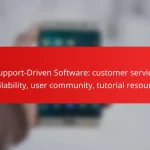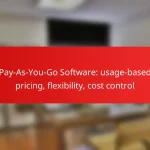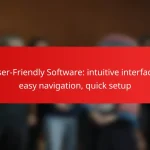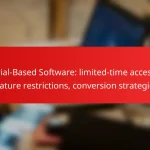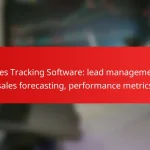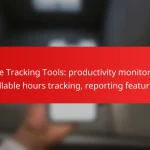Pay-As-You-Go software employs a usage-based pricing model, enabling users to pay solely for the services they consume. This flexible approach not only enhances cost control but also minimizes financial risk, making it an appealing choice for businesses aiming to manage their software expenses effectively.

How does Pay-As-You-Go Software work in the US?
Pay-As-You-Go software in the US operates on a usage-based pricing model, allowing users to pay only for the services they actually consume. This approach offers flexibility and cost control, making it an attractive option for businesses looking to optimize their software expenses.
Usage-based pricing model
The usage-based pricing model charges customers based on their actual consumption of software services, rather than a flat fee. This can include metrics such as the number of transactions processed, data storage used, or hours of service consumed. For example, a cloud storage service might charge $0.02 per gigabyte stored each month.
This model benefits businesses by aligning costs with usage, allowing them to scale expenses according to their needs. However, it can lead to unpredictable costs if usage spikes unexpectedly, so careful monitoring is essential.
Billing cycles and payment methods
Billing cycles for Pay-As-You-Go software typically occur monthly, but some providers may offer weekly or quarterly options. Payment methods can vary, with many services accepting credit cards, bank transfers, or even digital wallets. It’s important to review the payment terms to avoid unexpected charges.
Some providers may offer discounts for prepayment or longer commitment periods, which can help manage costs. Always check for any hidden fees associated with billing cycles or payment methods to ensure transparency.
Flexibility in scaling usage
One of the key advantages of Pay-As-You-Go software is its flexibility in scaling usage. Businesses can easily adjust their consumption based on demand, allowing them to respond quickly to changing needs. For instance, a company may increase its software usage during peak seasons and scale back during slower periods.
This adaptability helps businesses avoid overcommitting to fixed costs and ensures they only pay for what they need. However, it is crucial to have a clear understanding of usage patterns to optimize spending effectively and avoid surprises in billing.
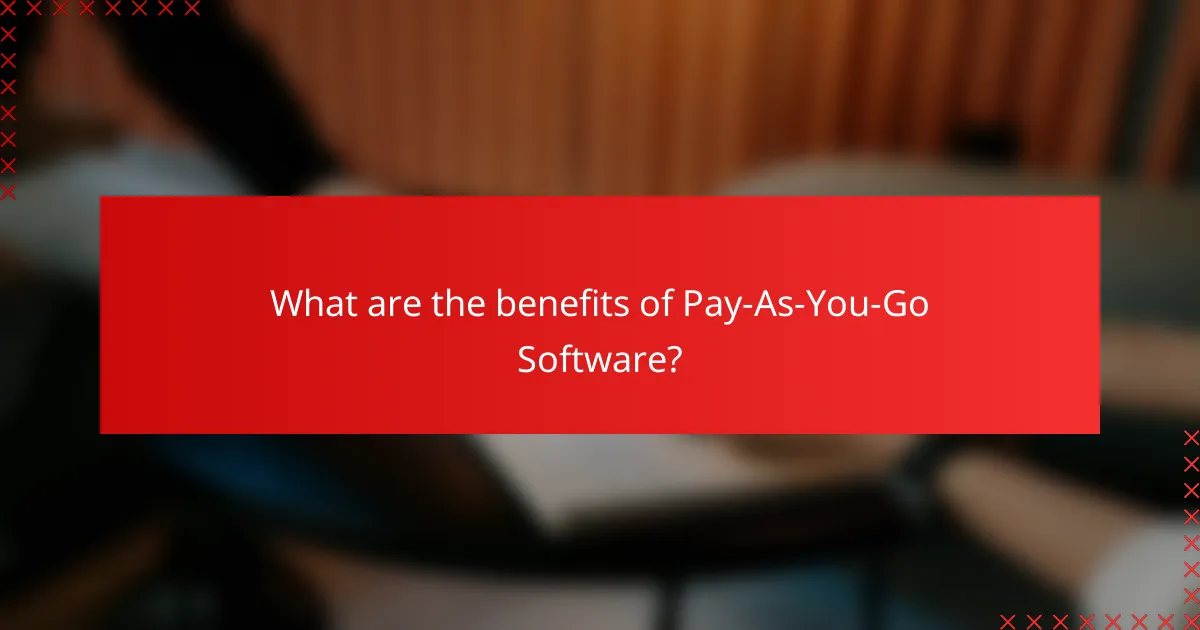
What are the benefits of Pay-As-You-Go Software?
Pay-As-You-Go software offers significant advantages, including cost control, reduced financial risk, and adaptability to changing needs. This pricing model allows users to pay only for what they use, making it a flexible option for businesses of all sizes.
Cost control and budgeting
Cost control is a primary benefit of Pay-As-You-Go software, as it enables businesses to align their expenses with actual usage. This model helps avoid overpaying for unused services, allowing for more accurate budgeting.
For instance, companies can allocate funds based on projected usage, adjusting their budget as needed. This approach can lead to savings of 20-30% compared to traditional subscription models, especially for businesses with fluctuating demands.
Reduced financial risk
Pay-As-You-Go software minimizes financial risk by eliminating long-term commitments. Businesses can start using the software without significant upfront investments, making it easier to test new solutions without the fear of wasted resources.
This flexibility allows companies to scale their usage up or down based on performance and needs, reducing the chance of being locked into a costly contract that may not deliver expected returns.
Adaptability to changing needs
Adaptability is a key feature of Pay-As-You-Go software, as it allows businesses to respond quickly to changing requirements. Companies can easily increase or decrease their usage based on current projects or market conditions.
For example, a seasonal business can ramp up its software usage during peak times and scale back during off-peak periods, ensuring they only pay for what they need. This responsiveness can enhance operational efficiency and support growth initiatives without financial strain.

Which industries benefit from Pay-As-You-Go Software?
Pay-As-You-Go software is advantageous for industries that require flexibility and cost control in their software expenses. This pricing model allows businesses to pay only for the resources they use, making it ideal for sectors with fluctuating demands.
Technology and SaaS companies
Technology and Software as a Service (SaaS) companies thrive on Pay-As-You-Go models due to their variable usage patterns. These businesses often experience rapid growth or seasonal spikes in demand, making it crucial to align costs with actual usage. For instance, a cloud storage provider may charge customers based on the amount of data stored, allowing users to scale up or down as needed.
Additionally, this model encourages innovation, as companies can experiment with new features without committing to fixed costs. They can assess user engagement and adjust offerings accordingly, optimizing both customer satisfaction and revenue.
Startups and small businesses
Startups and small businesses benefit significantly from Pay-As-You-Go software due to limited budgets and unpredictable revenue streams. This model allows them to access essential tools and services without upfront investments, which can be critical in the early stages of growth. For example, a small marketing firm might use a pay-per-click advertising platform, paying only for the clicks they receive.
Moreover, this pricing structure provides the flexibility to pivot strategies without financial strain. Startups can scale their software usage up or down based on project demands, ensuring they only pay for what they need at any given time.
Healthcare and education sectors
The healthcare and education sectors increasingly adopt Pay-As-You-Go software to manage costs effectively while meeting diverse needs. In healthcare, for instance, telemedicine platforms may charge based on the number of consultations conducted, allowing facilities to control expenses while expanding access to care. This model can be particularly beneficial during public health emergencies when demand can surge unexpectedly.
In education, institutions can utilize learning management systems that charge per active user or course, enabling them to adjust their subscriptions based on enrollment numbers. This flexibility supports budget management and ensures resources are allocated efficiently, enhancing the overall learning experience.
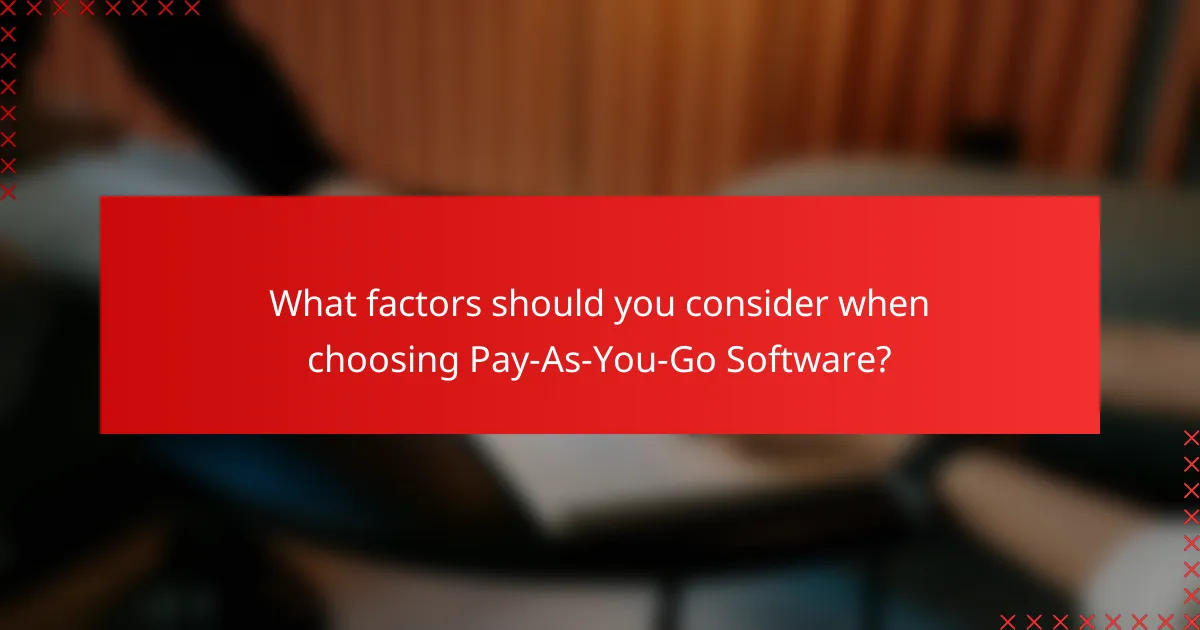
What factors should you consider when choosing Pay-As-You-Go Software?
When selecting Pay-As-You-Go software, consider usage tracking, integration capabilities, and customer support. These factors will significantly impact your flexibility, cost control, and overall satisfaction with the service.
Usage tracking and reporting features
Effective usage tracking is crucial for managing costs in Pay-As-You-Go software. Look for features that provide real-time insights into your usage patterns, allowing you to adjust your consumption as needed. Detailed reporting can help identify trends and optimize spending.
Consider software that offers customizable dashboards and alerts for usage thresholds. This way, you can proactively manage your budget and avoid unexpected charges.
Integration with existing tools
Integration capabilities are essential for ensuring seamless workflows. Check if the Pay-As-You-Go software can connect with your current systems, such as CRM, project management, or accounting tools. This will help maintain efficiency and reduce the need for manual data entry.
Prioritize solutions that support popular APIs or have pre-built connectors for widely used applications. This can save time and enhance productivity across your organization.
Customer support and service levels
Reliable customer support is vital when using Pay-As-You-Go software, especially if you encounter issues or have questions. Evaluate the support options available, such as live chat, email, or phone assistance, and their availability hours.
Consider the service levels offered, including response times and the expertise of support staff. A provider with strong support can help you maximize the benefits of the software and minimize downtime.
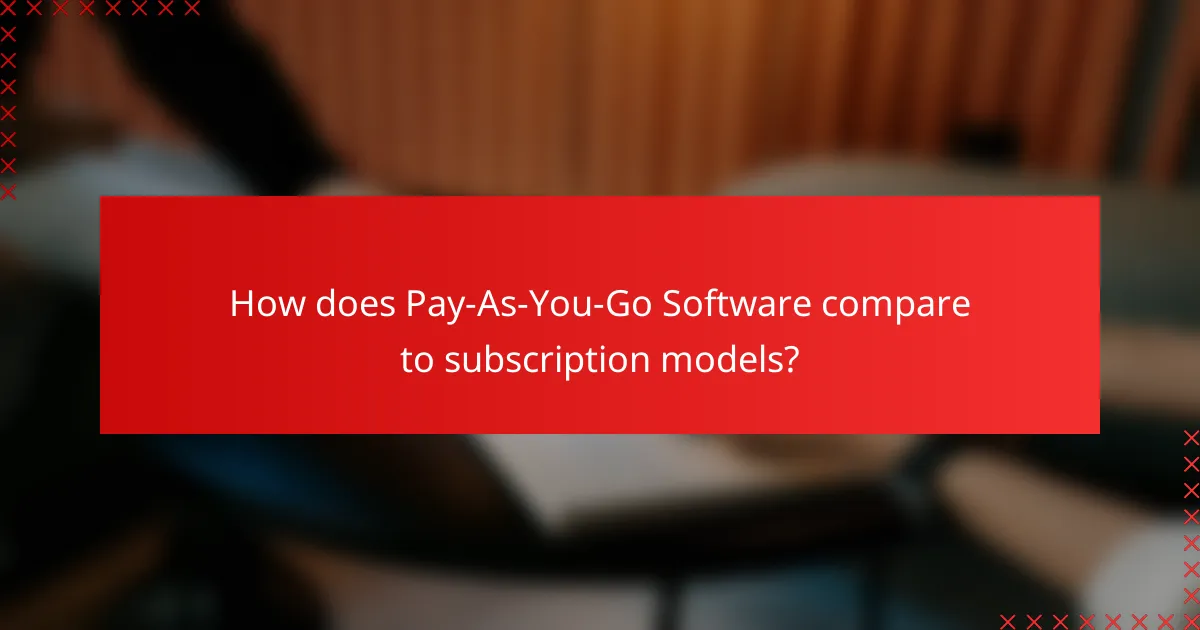
How does Pay-As-You-Go Software compare to subscription models?
Pay-As-You-Go software offers a usage-based pricing model that contrasts with traditional subscription models by charging users based on their actual consumption. This approach provides flexibility and cost control, making it appealing for businesses with fluctuating needs.
Cost efficiency over time
Pay-As-You-Go software can lead to cost savings, especially for businesses that experience variable usage patterns. Instead of paying a fixed monthly fee, users only incur costs when they utilize the service, which can result in lower overall expenses during periods of low activity.
In contrast, subscription models require a consistent payment regardless of usage, which may not be cost-effective for all users. For example, a company that only needs software during peak seasons may find that a pay-as-you-go model significantly reduces unnecessary spending.
Commitment and flexibility differences
Pay-As-You-Go software typically requires less long-term commitment, allowing businesses to scale their usage up or down based on current needs. This flexibility is beneficial for startups or companies with unpredictable workloads, as they can adjust their spending in real-time.
On the other hand, subscription models often involve a commitment for a set period, which can lead to higher costs if a business’s needs change. Users may find themselves locked into contracts that do not align with their current requirements, making it harder to manage budgets effectively.
Use cases for each model
Pay-As-You-Go software is ideal for businesses with fluctuating demands, such as seasonal retailers or project-based firms that require software only during specific periods. This model allows them to pay only for what they use, optimizing their budget.
Subscription models work well for organizations with predictable, ongoing needs, such as large enterprises that require consistent access to software tools. For these users, the stability of a subscription can simplify budgeting and ensure uninterrupted service.
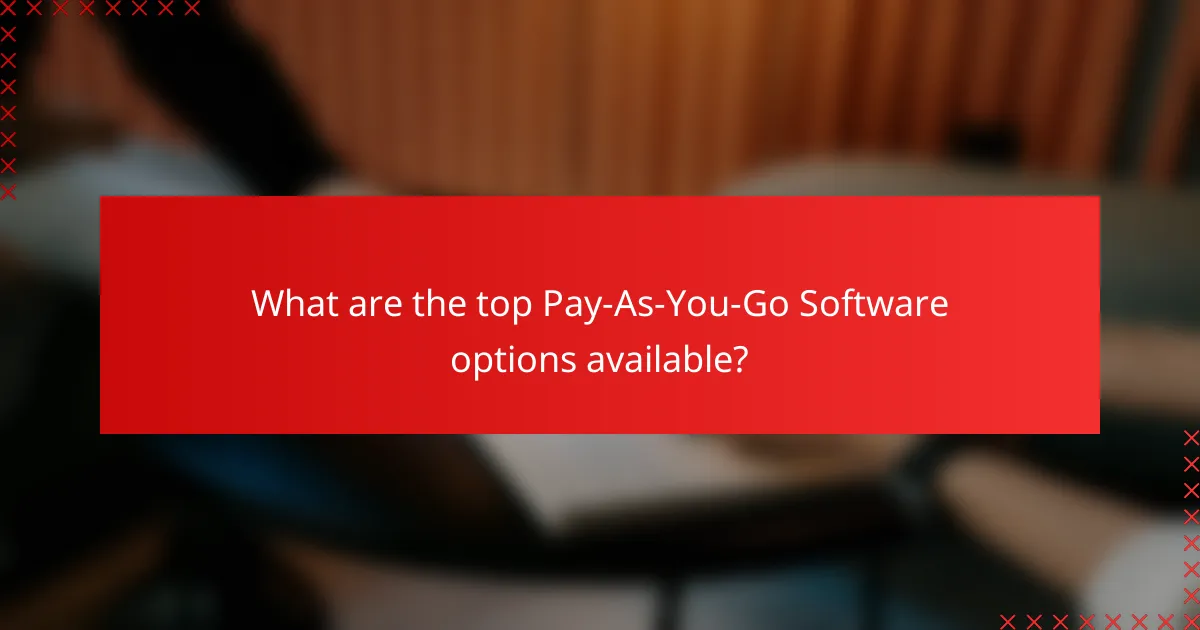
What are the top Pay-As-You-Go Software options available?
The top Pay-As-You-Go software options include platforms that allow users to pay only for the services they consume, offering flexibility and cost control. These solutions are particularly beneficial for businesses looking to scale their operations without committing to fixed expenses.
Amazon Web Services (AWS)
Amazon Web Services (AWS) provides a comprehensive suite of cloud services with a pay-as-you-go pricing model. Users can access a wide range of resources, from computing power to storage, and only pay for what they use, which can lead to significant cost savings for businesses of all sizes.
When using AWS, it’s essential to monitor usage closely to avoid unexpected charges. AWS offers tools like the AWS Cost Explorer, which helps users analyze their spending and optimize resource allocation. For example, businesses can set budgets and alerts to manage costs effectively.
Google Cloud Platform (GCP)
Google Cloud Platform (GCP) also operates on a pay-as-you-go basis, allowing users to pay for the exact resources they consume. GCP offers a variety of services, including machine learning, data storage, and application hosting, making it suitable for diverse business needs.
To maximize savings on GCP, consider using committed use contracts for predictable workloads, which can offer discounts compared to on-demand pricing. Additionally, GCP provides detailed billing reports that help users track their expenses and adjust their usage accordingly, ensuring efficient cost management.
